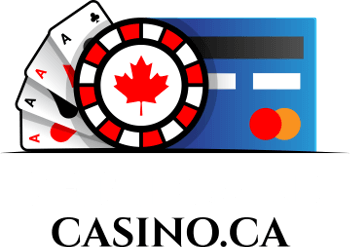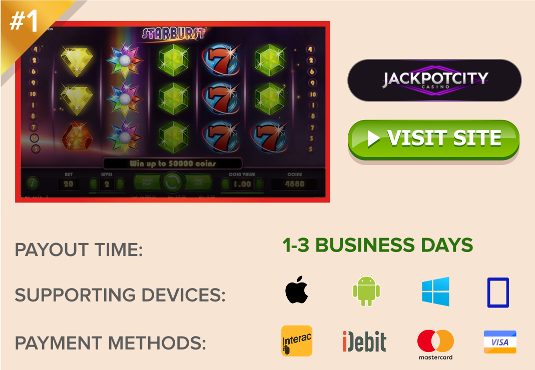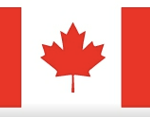The Not-So-Friendly Rules of Face Up 21
How to play Face Up 21, even though you really shouldn’t. These disillusionary rules and strategies explain why.

There aren’t too many blackjack games I would discourage you entirely from playing. Face Up 21 is one of them. It’s not that the idea of seeing both of the dealer’s cards isn’t intriguing. I’m rather fond of the concept, myself. The problem is that there are other games that offer this same advantage – other games with better rules and a far lower house edge.
If you’re already convinced that Face Up 21, featuring a house edge of 0.75% (RTP 99.25%), is not the game for you, and would like to move on to the better version of this game, I don’t blame you. Click the link below to learn all about Double Exposure Blackjack, presenting a house edge of 0.32% (RTP 99.68%), and forget you ever wasted your time reading the above paragraph:
Otherwise, feel free to continue reading our comprehensive guide to…
How to Play Face Up 21
Face Up 21 is the common name of an online blackjack game produced by a digital software company called RealTime Gaming. The main attraction is the exposure of both dealer cards. Many blackjack games don’t reveal either of the dealer’s cards. Most reveal just one. Face Up 21 deals them both “face up”, which is, generally speaking, a fantastic advantage for the player.
In order to draw the edge back into the casino’s favor, other rules – less player-friendly rules – have been invoked. Topping the list, a natural blackjack only pays 1 to 1. Players may double only on a hard total of 9-11, and the dealer will hit on soft 17. A tie for blackjack is a win for the player, but all other ties result in a loss.
With 6 decks in the shoe, and a perfect strategy applied, these rules result in a house edge of 0.75%; twice that of Microgaming’s Double Exposure Blackjack (0.32%).
Specific Rules of Play
- Decks: 6
- Soft 17: Dealer Hits
- Doubling: Yes, on Hard Total 9, 10 or 11 only
- Splitting: Yes, 2x
- Double after Split: Yes
- Resplit Aces: No
- Draw to Split Aces: No
- Surrender: No
- Dealer Checks for Blackjack: No
- Tie for Blackjack: Player wins
- All other Ties: Players Loses
- Blackjack Pays: 1 to 1
Face Up 21 Strategy Charts
If you’re familiar with how blackjack strategy charts work, you should know that most of them are small and neat enough to fit on a card the size of a any standard playing card. That’s not the case with Face Up 21.
Instead of depicting situational strategies for the dealer’s up card, you have to decide each move based on his complete hand, which – like your own hand – could be a hard or soft total. Bearing this in mind, the charts below come in three sections, each with two charts each. The first deals with a player’s hard hand totals when the dealer has a hard hand (chart 1) or a soft hand (chart 2). The next section is the same, but pertains to a player’s soft hand total. Finally, the third section regards the player being dealt a pair.
For reference:
- A hard total is a hand that does not have an Ace counting as 11.
- A soft hand is one that does contain an Ace counting as 11.
Make sure you’re observing the correct chart for the current player/dealer hands. Otherwise, you may face an even worse edge than 0.75%.
How to Decide a Player’s Hard Hand
This chart applies when the Player and Dealer both have Hard Totals.
| Player’s Hard Total | Correct Action by Dealer’s Hard Total |
| 5-7 | Double against 14-16; otherwise Hit |
| 8 | Double against 12-16; otherwise Hit |
| 9 | Double against 5-6 or 12-16; otherwise Hit |
| 10 | Double against 4-8 or 12-16; otherwise Hit |
| 11 | Double against 409 or 12-16; otherwise Hit |
| 12-13 | Stand against 4-6 or 12-16; otherwise Hit |
| 14 | Stand against 4-6 or 11-16; otherwise Hit |
| 15 | Stand against 4-6 or 10-16; otherwise Hit |
| 16 | Stand against 4-6 or 8-16; otherwise Hit |
| 17 | Stand against 4-16; otherwise Hit |
| 18 | Stand against 4-17; otherwise Hit |
| 19 | Stand against 4-18; otherwise Hit |
| 20 | Stand against 4-19; otherwise Hit |
| 21 | Stand |
This chart applies when the Player has a Hard Total and the Dealer has a Soft Total.
Note: Dealer’s Soft Total rules apply only to dealer hand values of up to 17 (i.e. hands the dealer must hit). If the dealer’s total if 18+, refer to the chart above (i.e. you must hit when your total is lower.)
| Player’s Hard Total | Correct Action by Dealer’s Soft Total of up to 17 |
| 5-9 | Hit |
| 10 | Double against 14-16; otherwise Hit |
| 9 | Double against 13-16; otherwise Hit |
| 10 | Double against 4-8 or 12-16; otherwise Hit |
| 11 | Double against 409 or 12-16; otherwise Hit |
| 12 | Stand against 14-16; otherwise Hit |
| 13-17 | Stand 12-16; otherwise Hit |
| 18-21 | Stand |
How to Decide a Player’s Soft Hand
This chart applies when the Player has a Soft Total and the Dealer has a Hard Total.
| Player’s Soft Total | Correct Action by Dealer’s Hard Total |
| 13 | Double against 12-16; otherwise Hit |
| 14-15 | Double against 6 or 12-16; otherwise Hit |
| 16-17 | Double against 5-6 or 12-16; otherwise Hit |
| 18 | Stand against 7 or 17; Double against 4-6 or 12-16; otherwise Hit |
| 19 | Hit against 19-20; Double against 12-16; otherwise Stand |
| 20 | Hit against 20; Double against 13-16; otherwise Stand |
| 21 | Stand |
This chart applies when the Player and Dealer both have Soft Totals.
Note: Dealer’s Soft Total rules apply only to values of up to 17 (i.e. hands the dealer must hit). If the dealer’s total if 18+, refer to the chart above (i.e. you must hit when your total is lower.)
| Player’s Soft Total | Correct Action by Dealer’s Soft Total of up to 17 |
| 13-17 | Hit |
| 18 | Stand against 17; otherwise Hit |
| 19-21 | Stand |
Conditions for Splitting Pairs
This first chart describes proper game play when the player is dealt any Pair against the Dealer’s Hard Total.
| Pair | Correct Action According to Dealer’s Hard Total |
| Ace-Ace | Split against 4-10 or 12-16; otherwise Hit |
| 2-2 | Split against 4-6 or 12-17; otherwise Hit |
| 3-3 | Split against 4-6 or 12-17; otherwise Hit |
| 4-4 | Split against 6 or 12-16; otherwise Hit |
| 5-5 | Double against 4-8 or 12-16; otherwise Hit |
| 6-6 | Split against 4-6 or 12-17; otherwise Hit |
| 7-7 | Stand against 11; Split against 4-6 or 12-17; otherwise Hit |
| 8-8 | Stand against 9-11; Hit against 18-20; otherwise Split |
| 9-9 | Stand against 7, 9-11 or 17; Hit against 19-20; otherwise Split |
| 10-10 | Split against 13-16; Hit against 20; otherwise Stand |
This last chart details proper game play with any Pair against Dealer’s Soft Total.
Note: Dealer’s Soft Total rules apply only to values of up to 17 (i.e. hands the dealer must hit). If the dealer’s total if 18+, refer to the chart above (i.e. you must hit when your total is lower.)
| Pair | Correct Action According to Dealer’s Soft Total |
| Ace-Ace | Split |
| 2-2 | Hit |
| 3-3 | Hit |
| 4-4 | Hit |
| 5-5 | Double against 14-16; otherwise Hit |
| 6-6 | Split against 14-16; otherwise Hit |
| 7-7 | Stand against 12-16; otherwise Hit |
| 8-8 | Stand against 12-15; otherwise Split |
| 9-9 | Split against 15-16; otherwise Stand |
| 10-10 | Stand |
 Jackpotcity.com is our editorial pick for your gaming needs. Currently offering an entire suite of casino games, as well as a wide range of Canadian deposit options, JackPotCity truly offers world-class gaming.
Jackpotcity.com is our editorial pick for your gaming needs. Currently offering an entire suite of casino games, as well as a wide range of Canadian deposit options, JackPotCity truly offers world-class gaming.





